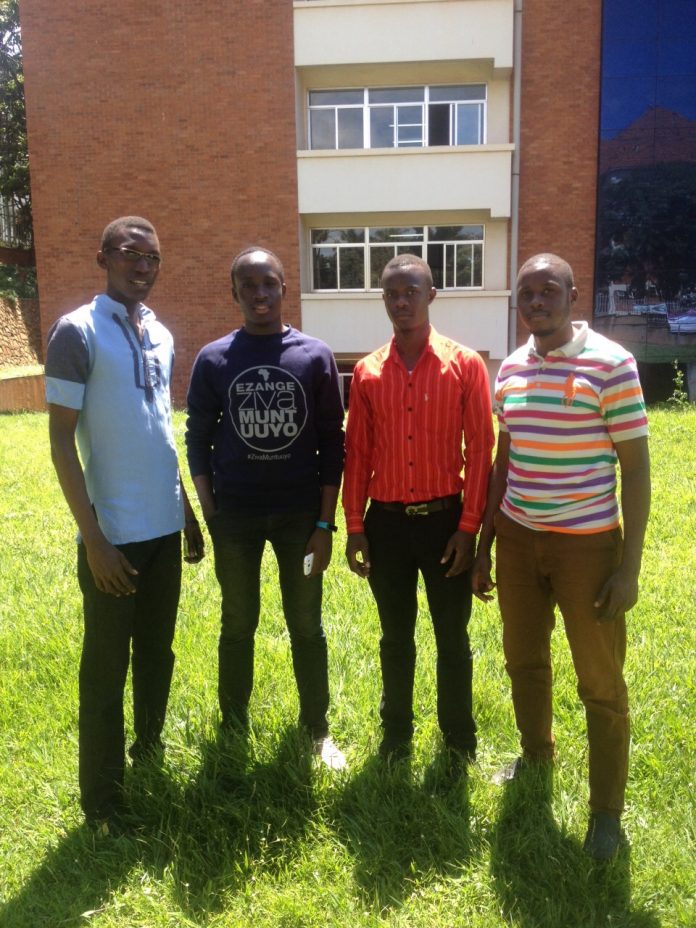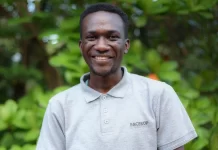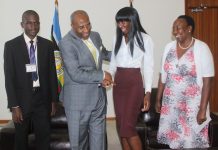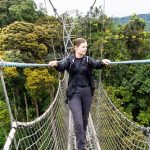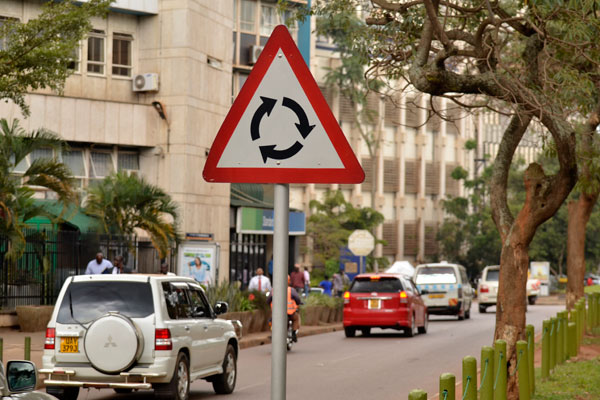These young Ugandans; David Lwangwa Mwesigwa 22 – Graphics Designer and Team Lead, Mubiru Joel 22– In charge, Research, Chemyolei Paul 22– Business Development Guy and Moris Atwine 21 – Software Development Lead have come together to develop a mobile phone app that seeks to help the blind people use their mobile phone without any assistance. David’s brother became blind when he was 10. This unfortunate incident turned into questions that David sought to solve. He felt bad that even as his brother grew older and owned a mobile phone, there are those basics that his brother could not enjoy. He met amazing friends at Makerere university that he has worked with to create Visual+. Visual+ is a gesture based interaction and voice commands mobile application that helps a visually impaired person to manage the frequently used applications on phones as making calls and accessing music files.
What in the world is Visual+?
Many times, human rights are echoed in our ears about how it’s our right to have freedom of speech, right to life and more often we hear that major right, a right to education.
Visual+ is simply an easy to use gesture based interaction and voice commands mobile application that manages the most frequently used applications on a mobile device.
How does doe this awesome app work?
Visual+ works in such way that, a user (visually impaired person) is required to be putting on headsets at the time of initiation to clearly listen to the voice prompts and to enhance your interaction with the app as it uses voice.
To initiate, the user shuffles the mobile device which activates the application.
There are four features on the home screen which include phone, music, notes and personal.
So,
- By swiping to the right, the gesture helps the user to access prerecorded audio notes that are stored on the mobile device as audio books, quotes and many more.
- A user swiping down, this gesture brings a lot of personalization tools that can be used by the user such as recording their own notes or speeches. A user is then prompted to swipe the screen to a given direction for app to register their choice for example swiping screen to the right to make a recording of their own.
- By swiping to the left, the gesture helps the user access his or her music, reading material. A list of all these choices is displayed on screen, also echoed in user’s ear piece. The user will then swipe to the left in order to listen to the music list, or swipe to the right to play the stored music.
- By swiping up, this gesture displays the phone menu where a user can add a phone number and be able to make a call of his/her choice using voice prompts. For example call Moris, once it’s saved, it processes the call automatically.
- For a user to go back to a previous screen as well exit the application, he / she simply double taps the screen.
What problems does it seek to solve?
World health Organization (1997) estimated the number of visually impaired people worldwide to be 135 million.
Focusing on Uganda as a country, the number of visually impaired people has gone up to 1 million from 700,000 people (National Union of Disabled Persons, 2008). This group of people also has the required facilities that are not readily accessible in various parts of the country. More to this, the students with these facilities also have a challenge in accessing reading material for the blind, printing notes in brail or even playing educative games. Visual impairment is a great challenge worldwide.
What other opportunities do you think this app is likely to create?
Yes, Partnerships with telecom companies as well as phone companies!
Where do you draw your inspiration?
One of our team members, David has a brother who is blind, he has seen him fail to achieve most of the things and so thought he would really change such pressing problem through innovation. He then teamed up with Joel, Paul and Moris and that was the birth of Visual+.
What is your greatest achievements so far?
We were able to pitch it at the Humanitarian Innovation Exhibition Last Month, the feedback was promising, basically how it would be of great help to people in refugee camps and disaster affected areas.
Mainly, we haven’t really achieved much with this mobile app, we are still testing it with different groups to clearly understand how the blind or people with low vision can interface with these smart phones.
Does tech have a future in Uganda?
Technology in Uganda is like a child, ambitious and inquisitive. That’s why it’s really growing very fast
Are there times you have wanted to give up?
Not on the Visual+ app because passion is all we have for technology and there is a lot to be solved really. All in all, We are not about to give up.
What keeps you going during tough times?
We have the best solutions to most of these social problems affecting us, this may not necessarily be through technology, innovation as a process can have a considerable effort in changing most of problems we face, and in the end become our businesses.
What other projects have you worked on?
As a group, we haven’t worked on other mobile applications but some of the members Moris and David are among the brains behind the timely response and early diagnosis breast cancer management app called “BreastIT”. More info to this app is available on the project’s blog site www.thehyphengloveproject.wordpress.com
Any last words to the reader?
We have never set out to become founder or co-founders of a great innovation, we always seek to tackle most of these pressing problems in and around our community” – Moris Atwine, Co-Founder and Software Development Lead, Visual+

